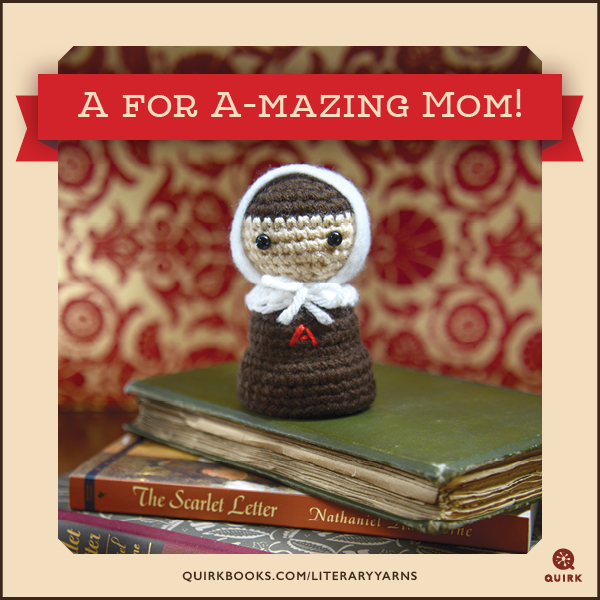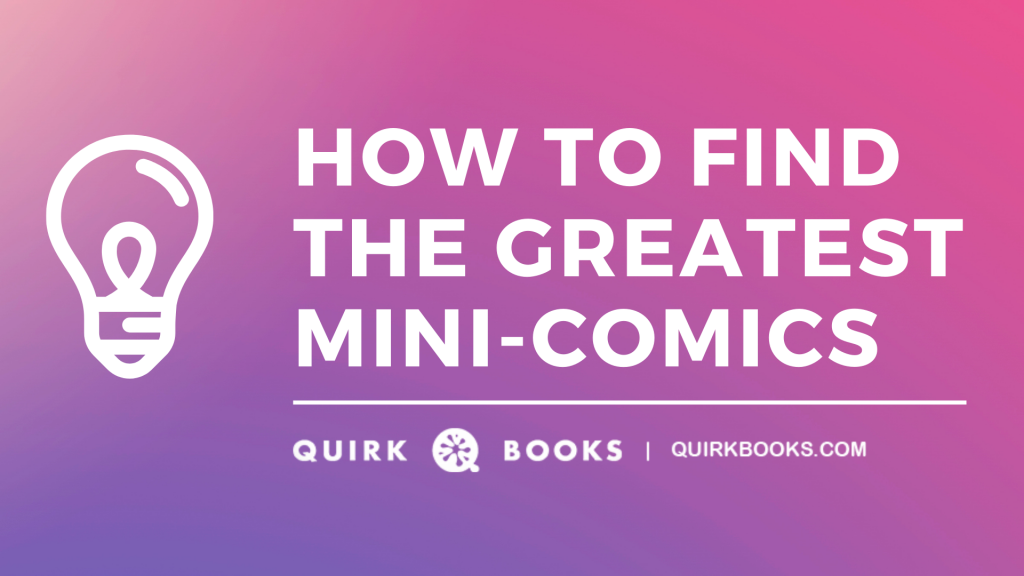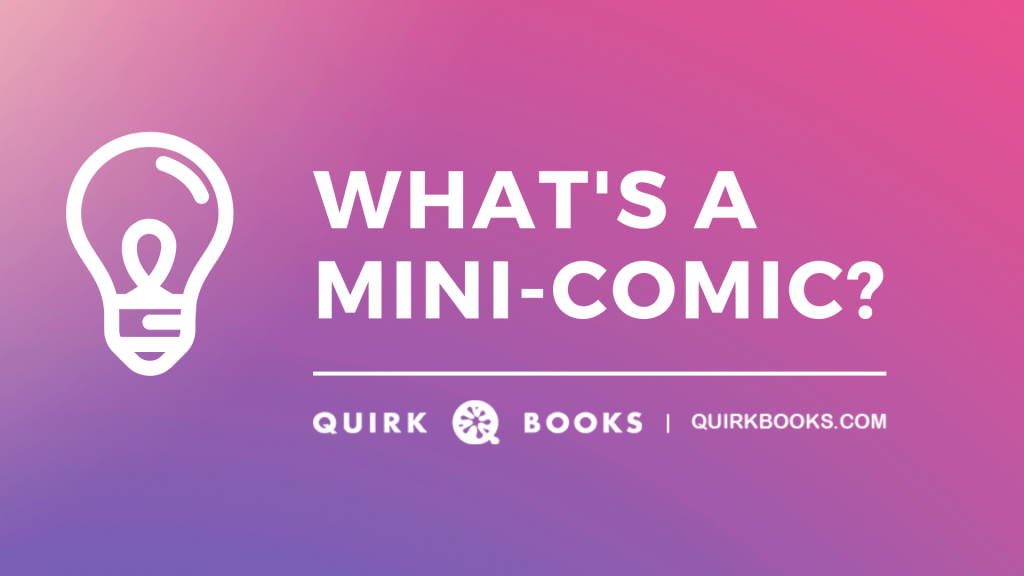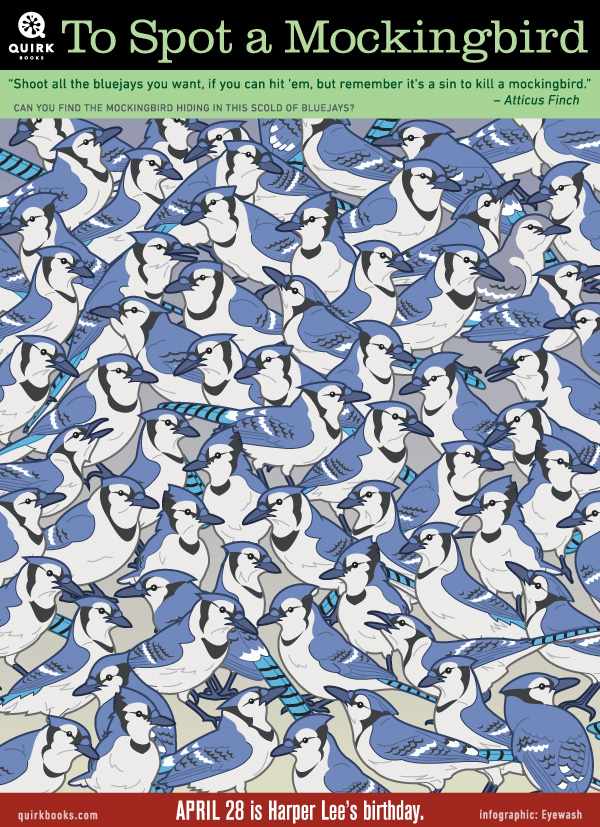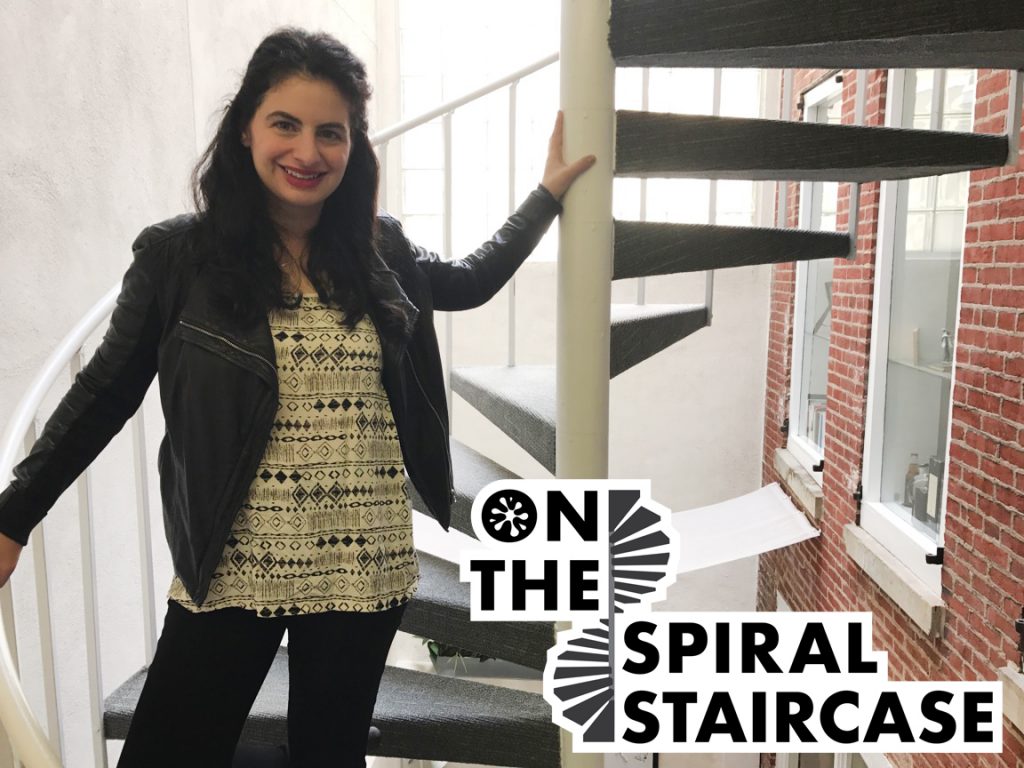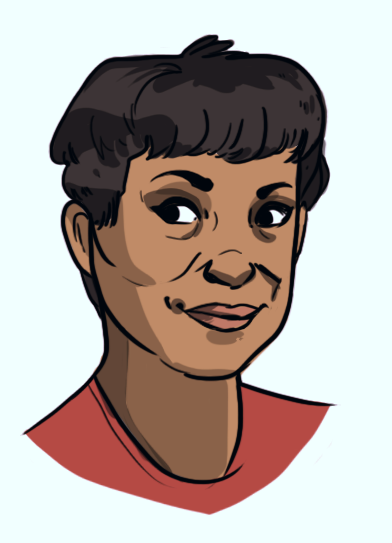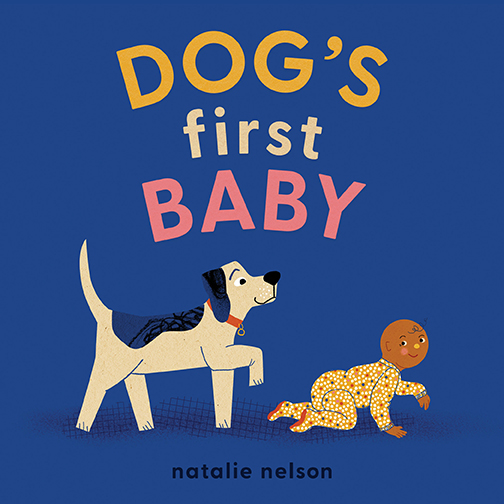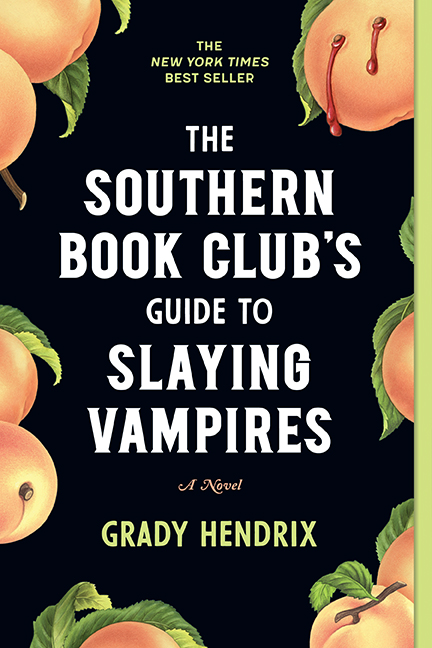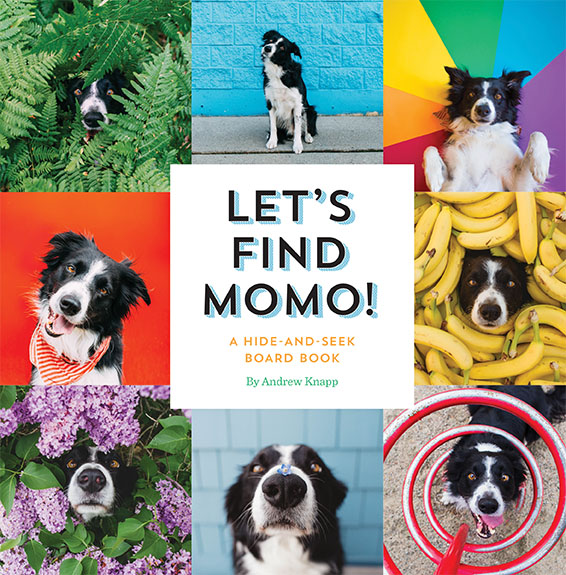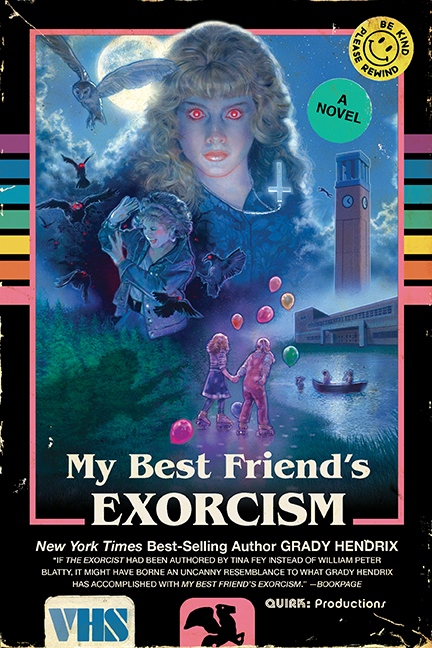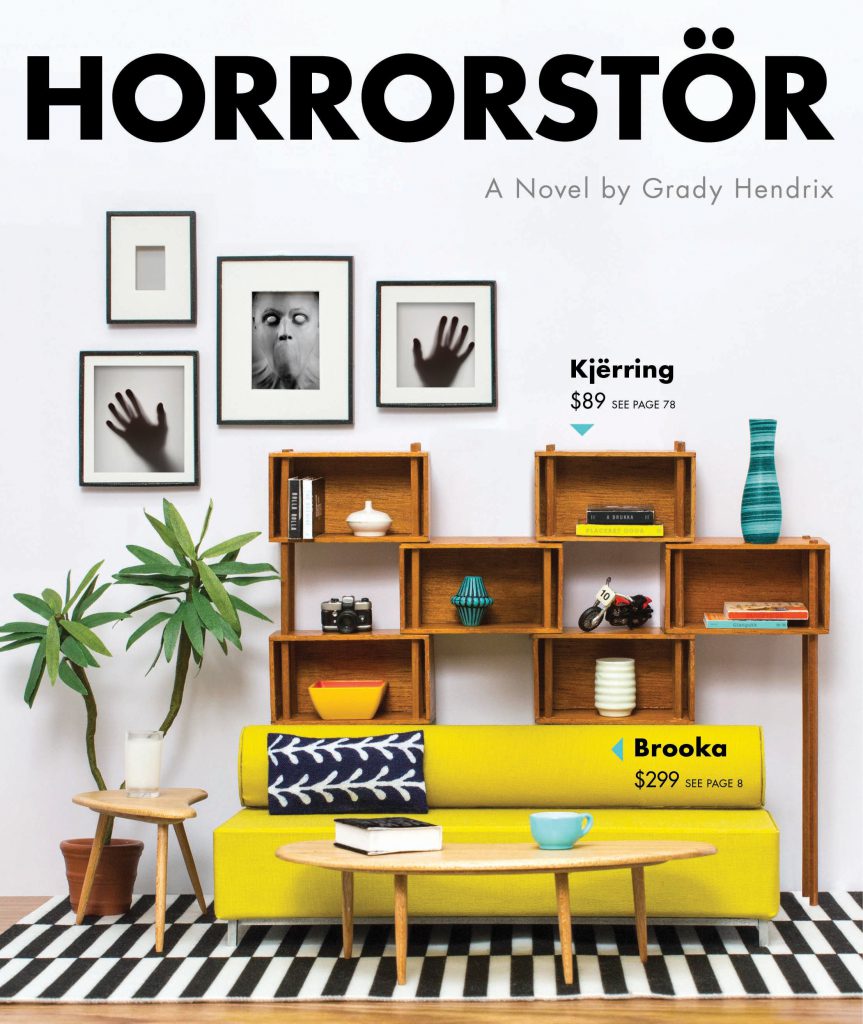Our Blog
Literary Yarns Mother’s Day Cards
Hey there, lovers of crochet and literature! With Mother's Day this coming Sunday, show Ma you care—with cards featuring adorable amigurumi. We're giving you two Literary Yarns Mother's Day cards to post to Tumblr, Pinterest, Instagram, or Facebook. Because we all know your mom is on Facebook. Just click the image to be taken to the file, and then right click and save! We hope she appreciates these literary puns as much as we do.
A for A-mazing Mom!
I've solved the mystery of the best mom ever. It's you.
Posted by Quirk Books Staff
How to Find the Greatest Mini-Comics
We told you how much we love mini-comics (a lot) and why they’re so awesome (too many reasons to fit inside these parentheses).
So are you ready to start filling your shelves with mini-comics? One of the best aspects of collecting mini-comics is that, even more so than for traditionally-published comics, no two collections are the same. That intricately-folded octagonal comic with the hand-colored front cover which you bought at an arts festival may have only been sold for six months before the creator got tired of finger-cramps. Or maybe it was one of just a hundred ever produced. If hunting for comics is sometimes like tracking big game, collecting mini-comics is like capturing rare beetles on the verge of extinction. Luckily, some mini-comics are more like ladybugs, easily acquired if you know where to look.
Whether you’re new to the world of mini-comics or already hip, here are your best bets for finding them…along with some more examples of favorite mini-comics from members of the Quirk Comics Club.
1: Go to comics shows! The first and best way to get ahold of mini-comics of all sorts and styles…and meet the people who created them. Not only does a comics expo, festival, convention, or show give you the opportunity to eyeball a slew of mini-comics in person, all at once, you’ll find creators who don’t have an Internet presence or who don’t sell their work online. That’s right, such people do exist! So a comics show is liable to expose you to minis that you wouldn’t find anywhere else. (Do your research, of course…some shows are more welcoming to independent comics creators than other.)
2: Think locally. Not all mini-comics travel very far, so it make sense to seek them out in your own backyard. Are there any cartoonists or comics creators in your area? They may sell mini-comics at local events, like art fairs or book festivals or music performances. What about your local friendly comics shop…might they have a selection of mini-comics, maybe on that shelf in the back corner where you’ve never bothered to wander? Or maybe the staff can clue you in to local mini-comic makers of note. A local library, especially in an artist-heavy town, or a college or university library, may have a few in their collection that could lead you back to the source.
3: Yes, yes, yes, OK, the Internet! We hope you’ll find opportunities to buy mini-comics directly from the creators, but there’s no denying that the Internet vastly extends your reach…and helps comics makers get their work to a much wider audience. You know how to google, but here are some leads to follow:
Start by checking the websites and social media streams of creators you know, or have heard of.
The Comics Journal offers reviews and round-ups of mini-comics, like this one. Minis referenced in older reviews may no longer be available, but their creators could have new ones on offer. You’ll also find reviews at opticalsloth.com.
Don’t overlook Etsy, which is chock full of comic-maker shops. Making mini-comics is a form of crafting, right? Start by searching for comics/handmade in the “Books, Movies & Music” category.
If you want an overview of mini-comics history, and don’t mind reproductions of the originals, Fantagraphics has you covered with a two-volume Treasury of Mini Comics set.
That should keep you busy, but remember to spend some time making space on your shelves for all the new mini-comics you’ll soon be ordering…and making. That’s right. We've also discussed how you can make mini-comics of your own (Part 1, Part 2)!
MORE OF OUR FAVORITE MINI-COMICS:
In Blintz, by Rel, three wishes and two blintzes add up to a conclusion that blintzes are awesome.
Like her full-length graphic novels, Julia Gfrörer's Palm Ash is powerful, disturbing, and grim, and beautifully drawn. The brightly colored paper she favors for her mini-comics adds a dream-like contrast to the dark doings within the pages.
Sad Animals, by Adam Meuse, ascribes the neurotic thoughts of humans to a bunch of cartoon animals. We don't know why that's entertaining, but it is.
Itching to start making your own mini-comics? Check out our How to Make a Mini-Comic: Part 1, How to Make a Mini-Comic: Part 2, and Mini Comics: The Wrap-Up for folding tips and layout tricks!
Mini-comics displayed are from the personal collections of Quirk Books Comics Club members and are intended as a small and subjective sampling of the ever-expanding universe of mini-comics.
Posted by Quirk Books Staff
What’s a Mini-Comic?
Here at Quirk Books we love comics. No duh. We even have a monthly Quirk Comics Club, when Quirk staffers meet over lunch for a show-and-tell of comics we’re buying, reading, and making. Check out our neat club pin:

We love comics of all sorts, from superhero books to indie memoirs to vintage newspaper strips to the weird artsy stuff to anything with cats in it. But there’s a special place in our heart for one particular comic book iteration: the mini-comic (a.k.a. mini comic or minicomic, but let’s go with mini-comic).
What is a mini-comic?
Don’t let the name fool you; a mini-comic doesn’t have to be small, as master of comics Jessica Abel points out. But very often they're mini in stature for practical reasons, because mini-comics are a favorite method for independent comics makers to self-produce, promote, and sell their work. Creators typically make mini-comics in small batches, usually reproducing them by means of photocopier or desktop publishing hardware. When you spot a mini-comic in the wild, it’s likely to be littler than a standard published comic (because paper costs add up), and it’s probably been folded, stapled and/or bound by hand (by the artist and whatever friends and family they can con into helping).
Exception: Welcome to the Pleasure Dome by Ian Sampson is not only a mega-sized mini-comic, it unfolds into a poster-sized final panel.
The Schulz Library, at the Center for Cartoon Studies in White River, Vermont, has upwards of 3,000 mini-comics in its collection. Their curators offer this definition:
A mini-comic is small, inexpensive, short-run comic, often handmade by the creator. Typically they are about half-letter in size, since that's easiest to produce, but our collection (known as the Zine Garden) includes mini-comics that are the size of a matchbook to huge 11×17 handmade books and everything in between.
“We don't have hard and fast criteria, there's a bit of ‘we know it when we see it,’ ” Schulz librarian Jarad Greene tells us. "But usually, it's folded and stapled/stitched by hand. Self-published, perfect bound books that don't have an ISBN are sometimes included as well.”
Why are mini-comics awesome?
For so many reasons!
For one thing, a mini-comic is like a unfiltered channel of creativity, direct from the cartoonist’s brain. There are precious few barriers to creating a mini-comic—if you have time, paper, drawing implements and an idea, you’re pretty much set. Comics artists and writers can use mini-comics to experiment with concepts that wouldn’t work in larger, longer, or traditionally-published formats. A mini-comic can run with a crazy idea that might be harder to sustain in full-length comic…and that goes not just for the story and art, but also size, shape, color, packaging, and production method. You can try almost anything in a minicomic.


Destination Earth, a mini-comic by Debbie Fong, includes a fold-out diary kept by the cat-astronaut protagonist.

Mini-comics can handle personal stories, like Kate McDonough's exploration of living with social anxiety, or simple concepts, like her documentation of bizarre items she encountered while working at a thrift shop.
They’re incredibly diverse. Mini-comics can be as appealingly simple or exquisitely complex as their creators decides to make them. Some minis are minimal, just line drawings on a folded sheet or paper. Others are like little jewels, with intricate art, creative packaging, unusual shapes and sizes, fancy bindings, and/or sophisticated printing techniques.
Mark Burrier's Show Off creates dark humor with simple line-drawings.
Rachel Bard's tiny mini-comic Come Back Soon , about as tall as a jumbo paper clip, comes with a teensier comic inside it. Her Growing Hope is printed in metallic gold ink on dark blue cardstock, and comes in a wrap-around band with a cutout in front.
They suggest a personal touch. Though they’re a reproduced medium, like all comics, many mini-comics havea hand-made quality that reminds you there’s a real person on the other end…someone who took the time to plan and print and cut and fold and staple and pack them. You can buy mini-comics at comic shows and chat with a creator who might go on to become famous (comic book famous, that is…but sometimes that's still pretty famous!). If you order a mini-comic online, you might get a hand-written thank you note with your purchase. Blockbuster comics and million-seller graphic novels are great, but minis remind us that comics are a vehicle for individual creativity at all levels, and can travel from creator's brain to reader's hands with fewer stops in between tham most media.
You've probably seen Tom Gauld's cartoons in The New York Times, The Guardian, and in his books published by Drawn & Quarterly. But he once published mini-comics through his own (now defunct) small press.
They’re cheap! Inexpensive, that is. There’s not much risk in spending a few bucks to sample the work of artists you’re not familiar with and bring their nutty ideas home with you. And at few bucks a pop, you can quickly build your own mini-comics library.
So we're agreed…mini-comics are awesome! But where does one find these insanely amazing treasues? Good question…check out our How to Find the Greatest Mini-Comics post for more details! If you're already dying to make your own comic, check out How to Make a Mini-Comic: Part 1, How to Make a Mini-Comic: Part 2, and Mini Comics: The Wrap-Up for ideas!
Mini-comics displayed are from the personal collections of Quirk Books Comics Club members and are intended as a small and subjective sampling of the ever-expanding universe of mini-comics.
Posted by Quirk Books Staff
On the Spiral Staircase with Nicole De Jackmo
In the nearly 6 years that Nicole has worked at Quirk, she has helped to publicize and market all things Quirk — including the Miss Peregrine's Home for Peculiar Children series, William Shakespeare's Star Wars, The Fangirl's Guide to the Galaxy, and more! She oversees everything from Quirk's books, to its brand, to this here blog.

If you were stranded on Mars and could only have one book to read, what would it be?
For a book person, this is an impossible question! And I've spent an unnecessary amount of time thinking about this and have devised some criteria:
1) It would be something that I've already read because I'll want to be able to re-read it—who knows how long I'll be stranded there!
2) Said book would have to be something that affected me rather than pure entertainment because I'm presuming that I'm on my own and will have a lot of time with my thoughts.
3) It can't be too dense or esoteric because reading should be enjoyable.
So! In pure Oscar's fashion, the nominees are:
- Hanya Yanagihara's A Little Life
- Zadie Smith's White Teeth
- Doris Kearns Goodwin's Team of Rivals
And the winner is: Zadie Smith's White Teeth because it meets all of the criteria. Plus, it's an epic story about family, friendship, and identity—all things that are important to me and give a lot of opportunity to mull over.

Tell us about something cool you keep at your desk.
This cute little Adipose stress ball. Adipose are the cutest aliens and they're from one of my all-time favorite episodes of Doctor Who. I mean how can you not love this little blob?

What's your fandom?
Doctor Who! I'm currently eagerly awaiting the new season and think that a Tardis that could take me to 4/15 would be perfect.
I think the history nerd in me is really drawn to time travel. As a kid I was obsessed with Quantum Leap and as an adult Doctor Who has been a fun combination of storytelling and time travel that I really enjoy. And while the Doctor is immortal there is something so incredibly refreshing that he's flawed and human – just like us. AND the writing is fantastic, there's a look back at the past and an imagining of the future, and at the core it's a story about friendship because none of us can go through life alone.

What's an unexpected talent or side effect you've picked up while working at Quirk?
It's funny that Quirk created the Worst Case Scenario series because I feel like that's the unexpected talent I've picked up while working at Quirk. And to clarify, I don't mean that I've become MacGyver and can survive with the string from a yo-yo and a bobby pin! It's more that I tend to envision what could possibly go wrong and then try to make sure to iron out any potential problems ahead of time…

If you were a Quirk book, which one would you be?
My Best Friend's Exorcism! Minnesota Public Radio called the book "Campy. Heartfelt. Horrifying." I'm not saying I'm campy or horrifying but I think that I'm a heartfelt person who would do just about anything for a friend.
Posted by Quirk Books Staff
Women You Should Know: Jackie Ormes
Illustration by Christina "Steenz" Stewart
When people consider the early history of comics, a few names spring immediately to mind – Stan Lee, Jack Kirby, Bob Kane, Steve Ditko, and newspaper cartoonists like Charles Addams and Charles Schultz. Rarely do you hear about the women who paved the way for modern comics, especially not the women of color who created pioneering comic strips. One such voice is Jackie Ormes, the first black female syndicated newspaper cartoonist, who created dynamic characters that rejected the negative stereotypes that permeated depictions of black women at the time.
Posted by Quirk Books Staff
